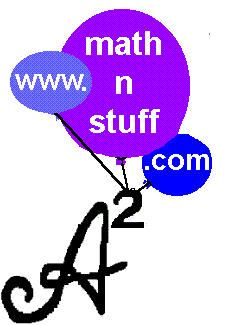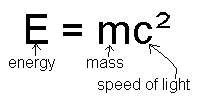In Class Writing in the Content Areas
IN CLASS WRITING ASSIGNMENTS IN THE CONTENT AREAS
© 1988, Agnes Azzolino
85 First Street
Keyport, NJ 07735-1503
January 1988 |
Dear Colleague,
For the past few years, I've been experimenting with writing as a teaching tool. At first,
I didn't even consider using in class writing exercises because I knew writing
would take too much time. Yet, writing had helped me to learn and I felt it could also help
my students. In January of 1986, I began assigning out of class writing assignments in
mathematics [Azzolino and Roth, 1987]. These assignments were so successful that I began
experimenting with in class writing. This letter, hopefully this dialogue, is my attempt to
share with you writing exercises and strategies you can use in class.
Because writing can be a process requiring much thought, finding time to have students
write often prohibits teachers from using writing as a teaching tool. Decreasing the
difficulty of the writing exercise can shorten the time required for writing. We know
that if a question is too hard to answer, we could ask an easier question. This is the
principal we are using. When considerable content must be "covered," in class assignments
may need to be short-- out of class assignments might deal with longer and more thought
provoking pieces.
Here, term papers, book reports, or technical papers will not be considered. Longer writings
have a very important place in any student's education. Please do not consider eliminating
the longer in favor of the shorter. Consider which kind of assignment might best achieve your goal.
Here, we'll consider the kinds of writing assignments instructors can use on a regular
basis without decreasing time spent on content and without increasing the time spent
grading papers. You probably use some of the techniques already. They are:
wordbanks, rewording,
debriefing, lead-sentences,
completion, and non-thought warmups.
These ideas could also be used in making a medium length or longer writing assignment.
Completion, lead-sentence, and non-thought warmups go together. we'll consider these first.
- COMPLETION
- COMPLETION --give the beginning of a sentence and have the students complete the sentence.
This technique is appropriate for beginning a text or for focusing a writing on a specific topic,
such as trouble spots, feelings, definitions, summaries, lists. Examples follow.
- Complete: The most confusing thing today was ______.
- Complete: A noun is _____.
- Complete: Xxx and yyy axe similar because _____.
- Complete: Today we learned about something called _____.
- It is important to document a computer program because _____.
-
- LEAD SENTENCE
- If you add an extra sentence, you're using the lead sentence technique. LEAD SENTENCE
--give a sentence and have students write a second sentence or a paragraph. This technique
is handy for explaining an idea or writing a definition or creating a word problem
(Watson, 1980). For example:
- The Declaration of Independence is a very important document. It _____.
- The factors of 18 are 1, 2, 3, 6, 9, and 18. Factors are numbers which _____.
- Mammals are warm-blooded. This means they _____.
- A noun is the name of a person, place, or thing. A pronoun is _____.
-
- WARMUP
- NON-THOUGHT WARMUP--given a question which may be answered without
much though, have students answer a second question on the same topic but which requires
more thought. You use this technique if, when writing a test, you start the test with
an easy question. For example:
-
Complete: Lines which are parallel have the same.
- State the equation of a line which Is parallel to y = 4x + 2.
-
- REWORDING
- REWORDING --give a statement, definition, or procedure, and have
the students reword or rewrite the it using different terms or using their own words.
This technique is a good diagnostic tool, a good reinforcer, and a good way of
personalizing content.
-
- We can ask students if they heard or understood what we've said and hear the
answer "yes." Rewording Is a way of proving they have heard and understood. Rewording
is also a way of assisting students to personalize and internalize what we try to teach.
-
- If writing assignment are kept short, they can easily and regularly be used in
the classroom. Some of the following formats of rewording are short enough to complete
in class and still complete the lesson. Some are sultable for in class use but
require more time than normally allocated to teach a lesson. Still others are lessons
in themselves or should be out of class assignments. As you read each format, think
about whether it could be used in class as usual, would require more class time than
usual or should be used out of class.
Here are my comments on the different formats. How did yours compare?
One, 2, 3, perhaps 4, and perhaps 5 I consider to be in class activites. These act as
an echo or as punctuation of the lecture.
Four, 5, and perhaps 6 lengthen lecture time. These are valuable questions to ask
and have students write about, but may require longer time for thought and completion.
I consider 5 and 7 out of class assignments. Entire writing lessons could be
developed using these formats.
-
- WORDBANK
- WORDBANK --given a list or bank of words, write a sentence or
paragraph using two, three, ..., or all of the words. This techniques is handy for
writing definitions, relating two ideas [Geeslin, 1977], writing
paragraph-long explanations, theorizing about related or apparently unrelated thoughts.
Here are some possible formats. Have students:
- Use the terms xxx, and yyy In the same sentence.
- Use the words xxx, yyy, and zzz to help you write a definition of aaa.
- Use wordbank terms in writing a question.
- "Free write" about four or five key words on the board
(Sanders, 1985).
- Write a true sentence or paragraph using the words xxx, yyy, and zzz but
without using the words aaa or bbb.
- For example:
- Write a true sentence using the words "rectangle" and
"square" but without using the word "always."
- write a paragraph which includes as many of the wordbank words as possible.
- Write a paragraph relating two Ideas [Geeslin, 1977].
Each of the above ideas has been presented as an exercise an individual student
could do without interacting with the rest of the class. They are valuable exercises
as is. The idea of having students write and then use their own texts as something
to contribute to class discussion is also an excellent strategy. Think of how this
interaction technique could be used to prepare for a test or bring closure to a
lecture. Wordbanks and debriefing are truly powerful tools for achieving these goals.
-
- DEBRIEFING
- DEBRIEFING--complete a procedure, reading, or lecture, then have
the students list important ideas, list the steps in the procedure just completed,
state the most important idea discussed, or list new words.
-
- Formats for this activity include:
- After: completing a procedure or algorithm, ask students to explain or
state what you did in a specific step.
- After completing a procedure or algorithm, ask students to list the steps
needed to complete the algorithm.
- Have sludents summarize the lecture in a standard format:
Title of Lecture: _________________________ Date:________________
New words:
1. This lesson taught me:
or
1. List the major topics of lecture:
2. List 2 key words in each topic.
- List the mistakes you made on the homework, last test, or in class.
- List 4 different topics in this chapter.
It should be noted that this sort of summarizing can be habit forming and
beneficial. It truly forces one to reconsider and review what's come before.
It doesn't take the place of taking notes, It does help organize material presented.
THERE IS TIME TO WRITE
The times I use writing to teach are times that are comfortable for me. As I grow and
experiment with using writing, I find more times that are appropriate. I use writing
in my classes:
- at the beginning of class when the students are still settling down and before
I even unpack my text and materials (I find wordbanks are great!);
- when I get a room full of blank stares (I might ask students to reword or debrief);
- between different topics--as in we've just covered one type of problem and
I'm erasing the board before going on to the next type of problem (try a debriefing or completion or wordbank);
- at the end of class, even with just a minute or two left (debriefing is really valuable).
Here's an example of how debriefing can work. Please debrief yourself by listing 3
new words you read in this letter and then by stating 1 idea or thought which is worth
remembering.
I hope you see this letter as the beginning of a dialogue between us. Thanks for
listening. Please write.
Sincerely,
Aggie Azzolino
P.S.
- Azzolino, Agnes and Roth, Robert G. "Questionbooks: Using Writing to Learn
Mathematics."
- The AMTYC Review 9 (Fall/Winter 1987): 41-49.
- __, How To Use Writing To Teach Mathematics
Keyport, NJ.
- Mathematical Concepts, inc. 1987.
- Birken, Marcia. "Teaching Students How to Study Mathematics:
A Classroom Approach."
- The Mathematics Teacher 79 (September 1986): 410-413.
- Geeslin, William E. "Using Writing About mathematics As A Teaching Technique."
- The Mathenatlcs Teacher 70 (February 1977): 112-115.
- Sanders, Arlette "Learning Logs: A Communication Strategy for
All Subject Areas."
- Educational Leadership 42 (February 1985): 7.
- Watson, Margaret. "Writing Has a Place in a Mathematics Class."
- The Mathenatics Teacher 73 (October 1980): 516-519.
 |
© '88, '99, Revised: 6/16/99, A2,
mathnstuff.com/papers/prof/inclass.htm
![[MC,i. Home, site home page]](//www.mathnstuff.com/math/spoken/here/1gif/mcihome.gif)
![[master list of all MSH! dictionary words]](//www.mathnstuff.com/math/spoken/here/1gif/words.gif)

![[Good Stuff -- free & valuable resources]](//www.mathnstuff.com/gif/goods.gif)
![[this semester's schedule w/links]](//www.mathnstuff.com/gif/semestr.gif) |
 4. Use or explain or write a formula or equation. Have the students
copy the formula and using arrows label each variable with a word.
For example:
4. Use or explain or write a formula or equation. Have the students
copy the formula and using arrows label each variable with a word.
For example:
![[MC,i. Home, site home page]](http://www.mathnstuff.com/math/spoken/here/1gif/mcihome.gif)
![[master list of all MSH! dictionary words]](http://www.mathnstuff.com/math/spoken/here/1gif/words.gif)

![[Good Stuff -- free & valuable resources]](http://www.mathnstuff.com/gif/goods.gif)
![[this semester's schedule w/links]](http://www.mathnstuff.com/gif/semestr.gif)